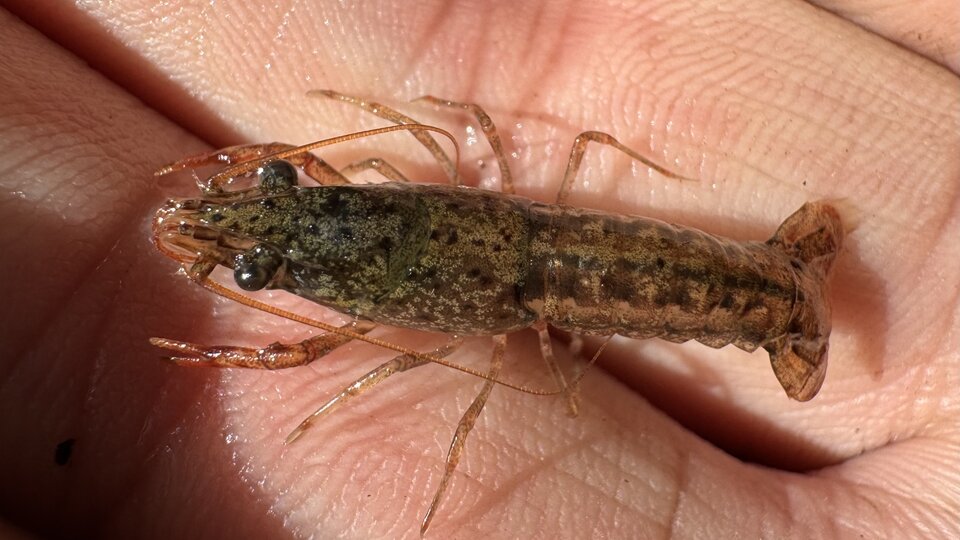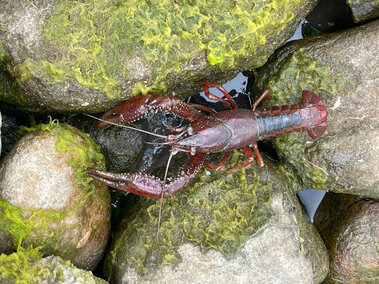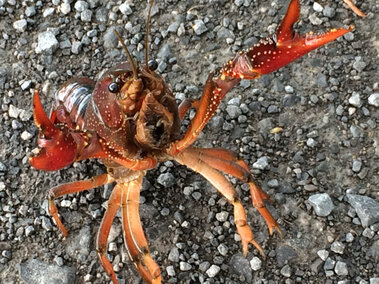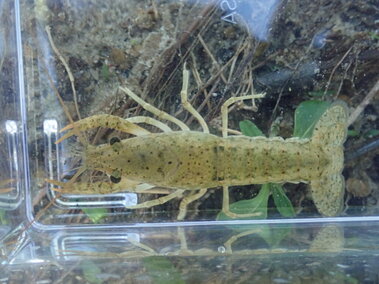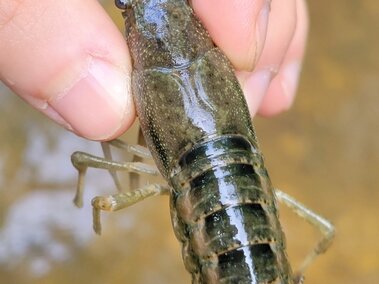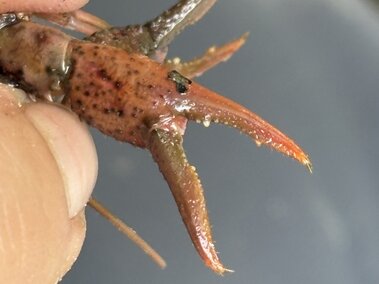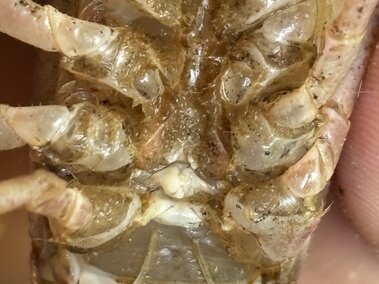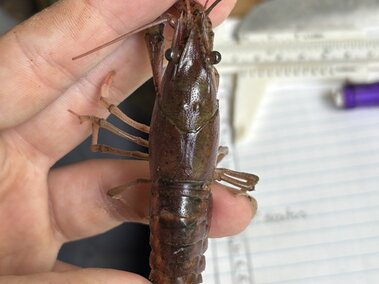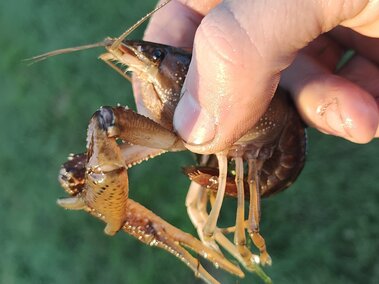General Information
Species Name: Procambarus acutus
Also Known As: No other names
Family: Cambaridae (Freshwater Crayfish)
Life Span: 1-2 years
Life Cycle: Not much is known about reproduction in white river crayfish. Females may mate in the fall before entering their wintering burrows, then lay and fertilize their eggs in the burrow in the spring. But they must have an extended breeding season as females with eggs have been found from March to December and mature males from April to November. Females carrying eggs and young tend to hide in a burrow so they are rarely collected. They can carry between 100-500 eggs.
Origin: United States (Southern Atlantic coast drainage from Georgia to Maine and from the Florida panhandle to
Mexico; central Mississippi Valley to the upper Great Lakes drainages)
Injurious: No
Category 2: Priority Aquatic Invasive Species
Why Are They Invasive?
White river crayfish may have significant impact on native crayfish if they were to come into contact, particularly if it was carrying crayfish plague. In environments with a lack of natural habitat and suitable substrate, white river crayfish may damage river banks and cause sedimentation of rivers through burrowing. They could also have potential economic impact to flood defenses through burrowing.
What Do They Look Like?
The white river crayfish looks a lot like the red swamp crayfish. The thorax (area of the body between the neck and the abdomen) of both is covered with tubercles (small bumps), which makes it look and feel like coarse sandpaper. It has long, narrow claws. It is pink-brown to dark red on its back. Large individuals are dark red to light brown/tan with a black rectangle on each abdominal segment that overall looks like a wide, dark stripe. Young white river crayfish are usually brown or yellowish.
Photos
Where Do They Live?
White river crayfish prefer quieter waters with abundant vegetation. They are found in sloughs, swamps, ponds, and seasonally flooded ditches, but are also found in creeks and smaller rivers without strong flow. Substrates include silt, packed mud, sand, and gravel. They can dig extensive burrows to avoid drought and cold (though they are a more temperate species). Their gills are capable of uptaking atmospheric oxygen while in their burrows (though they still require moisture to do so). Their burrows can be 30-40cm deep and terminate in an open chamber. The entrances to burrows are marked by chimneys that can be as much as 6″ high.
How Do They Spread?
White river crayfish is widely grown for food and the bait trade. They were probably released to new regions in the United States through bait bucket or aquaculture introductions with their California introduction occurring as a laboratory release.
How Do I Control Them?
Contact the Nebraska Game and Parks Commission to determine appropriate control methods. To prevent their spread and introduction into your waterbodies:
CLEAN your watercraft, trailer, angling gear and other equipment. Remove all aquatic vegetation and animal species from your equipment.
DRAIN your watercraft at the ramp by removing the boat plug and draining all live wells and ballast tanks.
DRY your watercraft, trailer and other equipment for at least 7 days before visiting another waterbody.
DON'T DUMP BAIT. Dispose of bait by emptying bait buckets on dry land, away from waterbodies or in a trash receptacle. Moving a live organism from one waterbody to another is illegal, even if you are planning to use the organism as bait.
DON'T LET IT LOOSE. Do not release or transport exotic or non-native fish species to new ecosystems. It is unlawful to release any aquatic species into a waterbody other than the one from which it was harvested. Doing so can promote the spread of AIS.
What Should I Do If I See Them in Nebraska?
If you see white river crayfish in Nebraska, you should report them to the Nebraska Game and Parks Commission's Aquatic Invasive Species (AIS) Program using their AIS Report Form. For guidance on what information to include in your report, check out our reporting tips.
References and More Information
Illinois Department of Natural Resources
Nebraska Game and Parks Commission
Non-Native Invasive Species Secretariat
North Caroline Wildlife Resources Commission
Schainost, S (2014). The Crayfish of Nebraska. Nebraska Game and Parks Commission.
Summary of Species Currently Listed as Injurious Wildlife under (18 U.S.C. 42) Lacey Act
